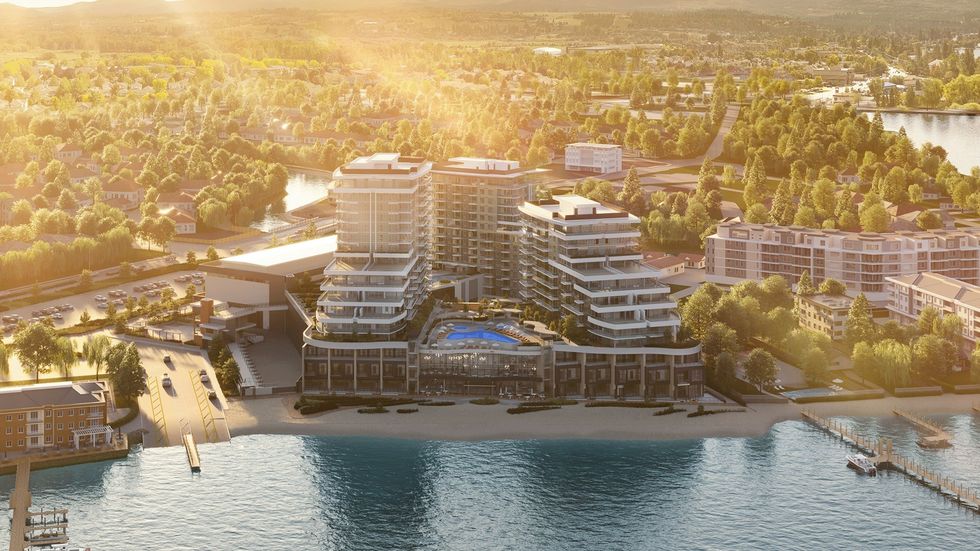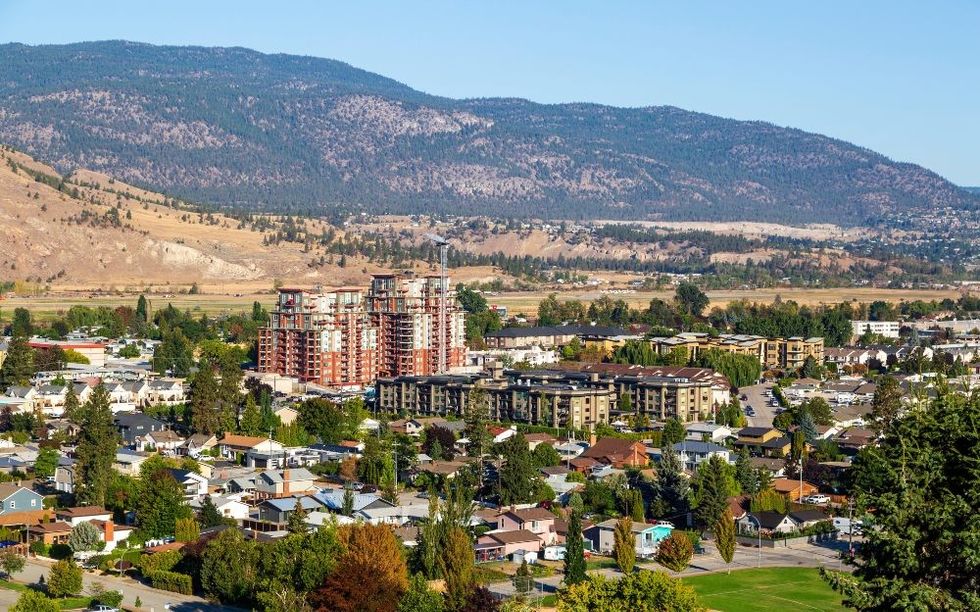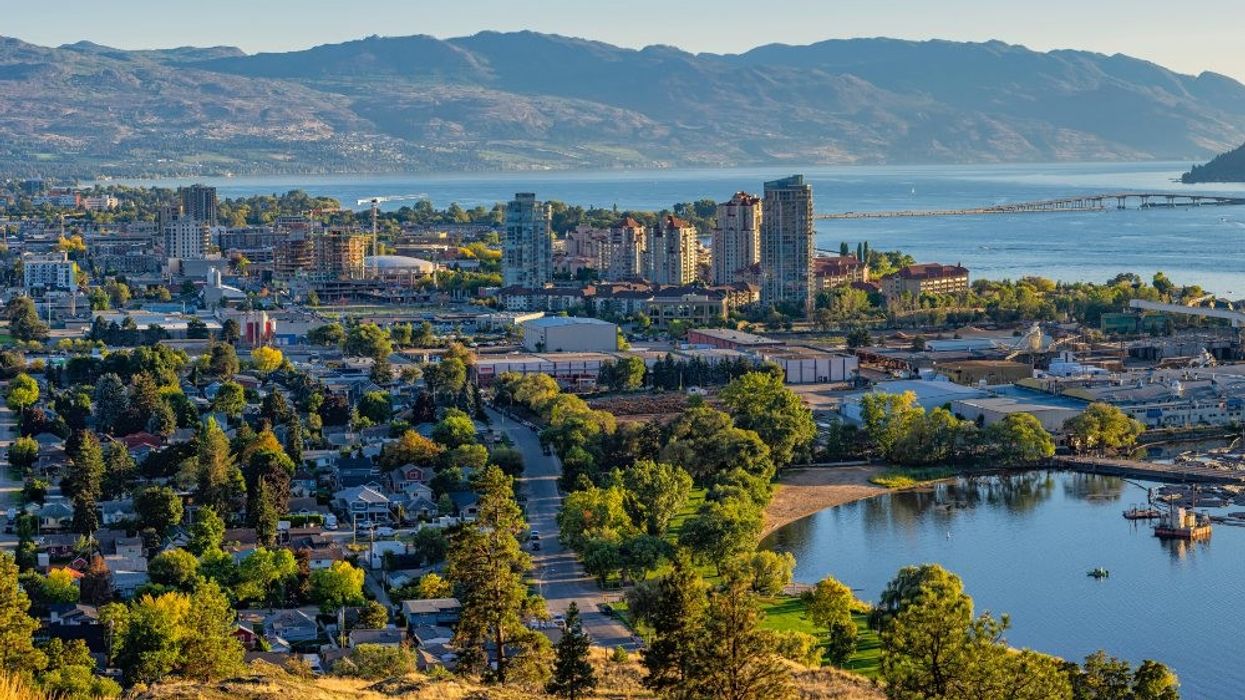All interviews in this article were conducted in early August prior to the City of Kelowna declaring a state of emergency due to the wildfires.
The Okanagan Valley is about 200 km long and 20 km wide, located just about halfway between the western coast of British Columbia and the border with Alberta. Large cities in the Okanagan include Vernon, Penticton, and West Kelowna, but Kelowna is the largest of them all, by a margin as wide as the Okanagan Lake.
In recent years, Kelowna has been routinely heralded as the fastest-growing city In Canada, after Statistics Canada data from the last census found that Kelowna saw a 14% growth rate from 2016 to 2021 — indeed the highest in Canada, and nearly a full 2% higher than the next-highest of Chilliwack, also in BC.
So how did this come to be?
"The Okanagan has always been a popular destination for people and it started off, many moons ago, as more of a vacation destination, as you can probably imagine, but it started to shift around 2015 and 2016 in a really big way," says Shane Styles, President of Epic Real Estate Solutions, a real estate marketing and sales firm based in Kelowna.
The impetus for that shift was the culmination of several things that happened in the Okanagan Valley, primarily in Kelowna, Styles says.
A key development was a seed planted years ago, when the University of British Columbia established a campus in Kelowna in 2005, taking over a space that was used by Okanagan University College, whose operations there were consolidated with that of UBC. (Okanagan University College's remaining operations are now called Okanagan College.)
Styles calls the UBC Okanagan campus a "cornerstone for the future of Kelowna," serving as a source to grow the region's population of educated young adults and drawing in companies that want to take advantage of that. Recognizing the success of the first campus, UBC is currently constructing a UBCO Downtown campus, which will take the form of a 43-storey high-rise currently set to complete construction in 2027.
Another big cornerstone is the Kelowna International Airport (YLW).
The first flight out of YLW took off in 1947, and the City of Kelowna has continued to grow the airport over the decades, alongside the growth of the region at large. Kelowna International Airport is now the ninth-busiest airport in all of Canada by the number of passengers serviced, despite not being anywhere near the ninth-largest population centre in the country. This month, construction is also kicking off on a renovation and expansion of the terminal building.
Styles says the ease of travel in and out of the region via YLW — with hourly flights to Vancouver, Calgary, and Edmonton, as well as direct flights to California, Las Vegas, and Mexico — has been a boon for the region and its appeal.
Those two factors in conjunction have also facilitated significant employment growth. The single-largest private employer in Kelowna is KF Aerospace, a company based in the area that employs about 1,000 people and offers services ranging from maintenance for Boeing and Airbus, to operating cargo charter services and administering a pilot training program for the Royal Canadian Air Force. KF Aerospace also has a partnership with Okanagan College — evidence of the region's ties to the industry.
And in the fastest-growing city in Canada — the "largest economic powerhouse," according to the Central Okanagan Economic Development Commission — is the technology sector, which consists of about 15,000 people across 930 companies that together contribute an estimated $2.5B to the economy every year.
All of these factors — along with the idyllic setting, the 135-km-long Okanagan Lake, more than 200 wineries, proximity to various ski resorts, and other quality-of-life amenities — have resulted in Kelowna solidifying its appeal. To borrow a term often used to describe Hollywood blockbusters, the Okanagan Valley, and Kelowna in particular, is now a "four-quadrant" city that appeals to the masses.
When the COVID-19 pandemic hit, many people were forced to reflect on what they valued and what they wanted their lives to look like, and the lustre of the Okanagan Valley and its qualities really shined to a lot of people, Styles says. And where the people go, so too go the companies that want to hire them, the businesses that want to serve them, and the real estate developers who want to build homes for them.
A Developing Story
"I'm going to quote something a developer said to me about four months ago," says Styles. "'We don't need to justify coming up there to do a project anymore. The market has those fundamentals now.'"
According to data published by the Canada Mortgage and Housing Corporation (CMHC) in July, Kelowna has recorded a total of 1,853 housing starts this year, 84.8% of which were townhouses or condominiums. That total puts Kelowna ahead of metropolitan areas such as Kitchener-Cambridge-Waterloo (1,717), Barrie (1,578), Saskatoon (1,482), London (1,404), the entire province of New Brunswick (1,685), and behind only the largest cities in the country.
Factoring in the rising construction costs and interest rates that continue to be a thorn in the side of the industry, this would seem to indicate a certain level of faith that developers have in the Kelowna market. And the faith is likely warranted, because Kelowna is definitely in need of more housing, like most other large population cores in Canada, and it's evident regardless of what datapoint you look at.
Earlier this month, the City published its official housing needs report, which concluded that Kelowna has a housing deficit of 3,750 to 5,000 units and an anticipated future demand (up to 2031) between 13,650 and 20,130 units. Kelowna also has its own homelessness crisis, to the point that the City is parting ways with the organization it tasked with alleviating the problem and taking the reins themselves.
Anecdotally, a pre-sale project called Savoy On Clement by Alliston, located in Downtown Kelowna, launched sales in March and is now at 85% sold. Over in Penticton, Sokana by Kerkhoff launched sales in July and sold its first release of 96 homes in just 72 hours. (That's 1.33 homes per hour, without factoring in business hours.)
Kerkhoff, along with Mission Group, are two of the more prominent developers in the Okanagan, but Styles says there are plenty of other independent developers, as well as developers coming in from the Lower Mainland, Calgary, and Edmonton. He says he recently received a call from a Toronto-based developer thinking about a Downtown Kelowna tower site.
"They know they can be successful," says Styles. "The risk has been taken out of the equation and they know there's massive demand."
Mission Group CEO Jon Friesen points to one of their ongoing projects as another example of the housing demand in Kelowna: the Aqua Waterfront Village in Kelowna, right along the Okanagan Lake.
"We have sold out of phase one. The second phase is two buildings on the waterfront. The building average price for those two towers is just over $1,400 [per sq. ft], which for Kelowna is quite pricey. For Vancouver, it's still not so pricey, but for Kelowna that's the highest price on any building by far, and it's probably $300 more than most of the inventory out there. Yet, we have not incentivized anybody [with] anything, we have not sold for $1 under asking from the beginning. In fact, last month we started increasing prices, and we have less than 100 units left out of 430."

Friesen says because the market is as stable as it is, and because they are well past the targets they need for construction financing, they are taking their time with the remaining inventory and are focusing on construction.
Mission Group's latest project is Alma, on Abbott Street. Sales will launch this month, with studios starting in the mid $300s, one-bedrooms in the mid-$500s, two-bedroom in the mid-$600s, and townhouses around $1.2 million. Friesen says they are confident it will be successful based on the number, and quality, of registrants they have already seen — enough that they may halt sales after hitting their presale requirement.
"We believe that there is a lot of pent-up demand in the market. There's a lot of buyers on the sidelines, wondering what will happen with interest rates, mostly, and the economy, secondly, but most of them are thinking 'this building will not close for another two years, I should make a commitment now, because the moment interest rates show any hint of going down, sale prices are going to pop, and by then it's too late, because everybody jumps in at the same time."
As a transplant who has also lived in Vancouver and Japan, Friesen says his feeling is that Kelowna has many of the big-city amenities, but very few of the problems, such as being able to drive anywhere in 15 minutes without ever being stuck in traffic. He believes that as more people continue to realize they can make a living in Kelowna, the real estate market is only going to continue growing, and the region will likely also appeal to investors because rental rates are not far off from those in Metro Vancouver, while home prices are more affordable.
On the re-sale side of the market, Faith Wilson, CEO and President of faithwilson | Christie's International Real Estate, a luxury-focused real estate brokerage, says the market in the Valley is quite balanced.
"The luxury market up there is performing super well. I also dabble in what I call 'off-the-grid' properties — $20M, $30M and up — and some of them are on-market, some of them are off, and there's a lot of interest in those," Wilson says. "When you look at the Okanagan, the luxury market is quite active, and I think that's indicative of how the Okanagan is really on the map."
Wilson says that there are a lot of people in the market there who are from the Lower Mainland, and also Alberta, who are looking for second or third homes — in the luxury segment or not. Styles says that he believes many of those getting into the market are doing so with the future in mind, buying a place now and renting it out before moving in themselves down the road.
"Townhomes are actually down a little bit throughout the Okanagan right now, which is interesting because townhouses are kind of a catch-all for both people moving up and downsizers," Wilson adds, "but the South Okanagan is a little bit softer right now, so there's an opportunity there for folks if they're looking to purchase, if they're looking for value, and I think people are always looking for value."
Wilson says she believes the Okanagan market can only go up from here, both figuratively and literally, and her brokerage recently opened a Kelowna office in June, which currently has a team of seven that Wilson hopes to grow to 30.
"I've been in and around the Okanagan Valley for decades, so I've seen a lot of changes, and it's just so fascinating to see how much is being built. Just as we're doing in the Lower Mainland, we're going up in the Okanagan Valley. I mean, when you talk about having 40-storey buildings in Kelowna, that's pretty amazing. You've got build, because there's people that are going to be coming there, and we need housing. Infrastructure is going to be super important. How do we move people around? What kind of transportation do we have? What housing types are going to be strong? Certainly, strata-titled properties are going to be a big story — they already are, and they'll continue to be a big story."
A Rising Tide Lifts All Boats
Friesen says that many are focused on Downtown Kelowna, but he's of the belief that the Lower Mission area — where many of Mission Group's projects are — should not be overlooked by developers or investors.
"The Lower Mission has far more of a relaxed, resort-like feel to it. It's level lake entry, there's no cliffs, it's sandy beaches, and the whole Pandosy corridor — the commercial corridor — has virtually no high-rises there, and the retail shops are old renovated buildings, which gives it a character that's hard to get anywhere else in Kelowna"
On a larger scale, having a big central draw like Kelowna that's doing well also brings benefits to other nearby markets.
Both Friesen and Styles independently identified Penticton as the next in line.

"They've got a food scene, a wine scene, a tourism scene, and the development scene is burgeoning. If there's any indicator that tells you there's a lot of market demand, selling out nearly 100 homes in the first days of introducing them is as clear as it gets," says Styles, alluding to the aforementioned Sokana project.
Adds Friesen: "They don't have an international airport and they don't have a teaching hospital, but they do have a university — Okanagan College is there — and they do have a very similar — on a smaller scale because it's a smaller city — housing shortage, and if somebody thought that they didn't want to quite spend the same prices as Kelowna on real estate, whether it's rental or purchase, I think Penticton is a wonderful place to look. It doesn't quite have as much of an industrial feel as, say, Vernon, but there's solid economic activity, there's good retail, good restaurants, and the amenities are strong. If Kelowna didn't exist, I think it would've been Penticton."
As a result of the residential real estate market coming into its own and all those people coming to the region, there's also plenty opportunity when it comes to commercial real estate.
Mission Group — in a 50/50 partnership with Nicola Wealth — is currently constructing Downtown Kelowna's only Class A office building called The Block that's set to be completed this fall, with occupancy expected beginning in the winter.
A recent analysis conducted by LinkedIn found that Kelowna was the top city in Canada when it comes to the number of job applications for remote work, but Friesen believes many companies in the region want workers to return to office, and that there will likely be a shortage of office space in the near future. (Mission Group themselves are moving their offices to The Block, in hopes that the high-quality space will draw their employees back to the office.)
The hope is that the region's burgeoning tech industry will result in more commercial development, and more commercial development will draw in new employers, creating something like the opposite of the so-called "Urban Doom Loop."
All in all, it all comes back to those market fundamentals.
"Life on the lake, life on the beaches, life in the mountains, life on your bicycle, all that kind of recreational stuff is really literally at your doorstep, and that was really what surprised me when I moved here from larger urban centres," says Friesen. "The investment climate is amazing, the real estate is strong, supply and demand balance favors ownership. It's tough to overlook this little city. I'm glad I moved here when I did, and I have no intention of ever moving away."
- New Sutton Place Luxury Hotel Announced for Kelowna International Airport ›
- 33-Storey Downtown Kelowna Hotel From Westcorp Receives Approval... for a Third Time ›
- Massive 5-Building, 1,000-Unit Kelowna Development Gets 2nd-Phase Approval ›
- New Kelowna Policy Limits Councillor-Developer Interactions ›
- Three Towers Proposed Next To Prospera Place In Kelowna ›
- Kelowna Considering Actions To Restrict Short-Term Rentals ›
- Kelowna Granted $31.5M Via Federal Housing Accelerator Fund ›
- Stryke Group's Plans For Penticton's "Innovation District" ›
- Sotheby's International Realty Canada Opens Kelowna Office ›
- Developer Sues City of Kelowna Over Rescinded Permits ›
- Kelowna's Mission Group Restructures Senior Leadership Team ›
- Class Action Suit Filed Against UBC Over Kelowna Campus Construction ›
- Kelowna Approves 7-Tower, 1700-Unit Draft Redevelopment Plan ›
- Why Developers See Penticton As The Okanagan Valley's Next Hotspot ›
- Kelowna' Development Future Jeopardized By Insufficient Electrical Capacity ›





















